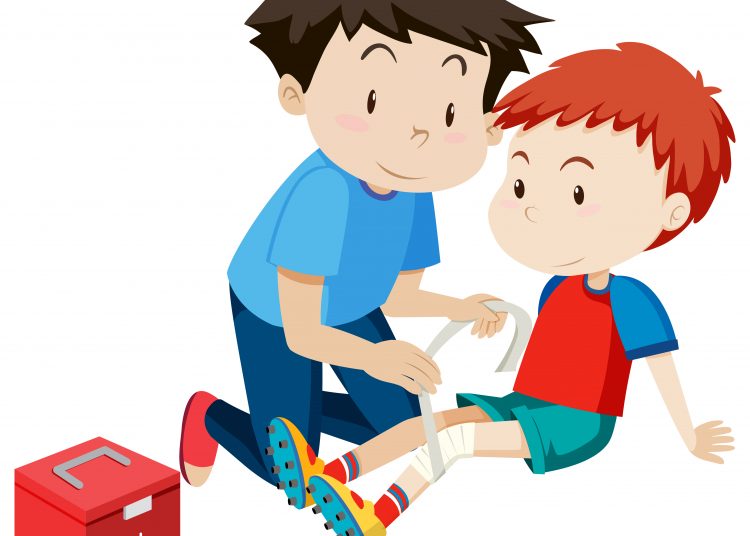(Image source : Vecteezy.com)
No matter how prepared, stretched, and warmed up you are, sometimes, sports injuries are inevitable.
In this article, we’re sharing the more common sports injuries and how to treat them, to help you on your way to recovery.
Disclaimer: While these treatments work short-term, you must consult your GP or physio for expert advice if pain persists.
Sprained ankle
The ligaments on the outside of our ankles are pretty weak – making spraining an ankle relatively easy.
Usually occurring when the foot becomes twisted, an ankle sprain can be treated through gentle stretching. Light exercise will help prevent you from losing flexibility and strength within the joint.
Pulled groin
Side-to-side movements can pull the groin. This type of injury is common in team sports like baseball, football, and hockey, where you use your legs to push off.
As there’s no brace or support for the groin, you’ll need to treat this particular injury with compression or ice. There’s very little you can do for a groin pull, so rest up and avoid returning to activity too quickly.
Shin splints
Shin splints are a sharp pain down the lower legs that lasts longer than a simple twinge. Splints are particularly common for joggers on harder surfaces like pavement or concrete.
While shin splints eventually ease on their own, ice can soothe the pain. Wearing a calf support can protect you from gaining further injury through day-to-day activity, too. You can order a bamboo calf support at Bearhug.
Strained hamstring
There are three muscles in the back of the thigh, all of which can be strained. Overstretching the hamstring can happen at pretty much any moment during low-intensity exercise, hurdles, or even just kicking the legs out when running. Landing forward during a fall can also cause you to overstretch and strain the hamstring.
Hamstrings are often the slowest injury to heal, as even just walking around put pressure onto the injured tissue. For a serious strain, it could easily take months to fully heal. While it isn’t recommended to stay still for months at a time, the best thing you can do for this type of injury is to just take things slow and steady.
Patellofemoral syndrome
This is a fancy word for when your kneecap repeatedly hits against the thigh bone. The impact can damage the tissue underneath the kneecap (patella) and can take up to six weeks to recover. High-intensity sports like running and basketball are common causes for this type of sports injury.
To treat patellofemoral, you should limit yourself to low-impact exercise until you make a full recovery. Quadricep exercises can also help to relieve the pain.
Tennis elbow
Repetitive use of the elbow – for example, when playing tennis and other racket sports – can often lead to epicondylitis. Serves and swings can irritate or tear the tendons on the outside of the joint. Tennis elbow is most common in those 30 and above and clears up on its own. Be sure to stay away from the courts until you’ve fully recovered, though.
If something doesn’t feel right, consult your GP as soon as possible.








































